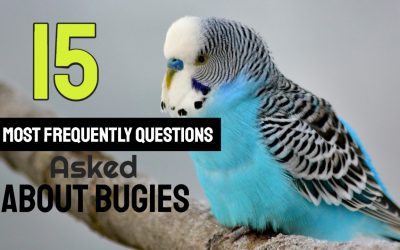
When the weather outside gets cold, it can create trouble for pet birds. Because most pet bird species hail from geographic areas that have warm, tropical climates, a drop in temperature can be destructive to their comfort and health, even if you keep your bird inside. In this article you will learn why cold weather can cause such a problem for pet birds,care for pet birds in cold weather, as well as tips to keep your feathered friend safe, healthy, and comfortable
Mimic Your Bird’s Native Environment
Although your pet bird was likely bred in captivity, its species is probably native to a region that stays fairly warm year-round. For instance, macaws come from the rainforests of South America, ringneck parakeets come from temperate climates in India, and African grey parrots originate in the warmest regions of Africa. These kinds of birds can not cope with harsh winter temperatures.
Thus, it is really important that the climate in which you house pet birds mimics their natural habitat. It often can be risky to expose a pet bird to an environment that is any cooler than 65 degrees Fahrenheit. That means outdoor aviaries must be monitored extremely closely for sudden changes in weather. And even if you place your bird in a climate-controlled environment, fast burst of cold air from an open door can stress its immune system and make it susceptible to illness.
Cold birds often sit with their feathers fluffed up to hold body heat, and they don’t move around much. This behavior also can be a symbol of illness. So if increasing the temperature of your bird’s environment doesn’t return back to its normal behavior quickly, consult your avian veterinarian.
Make Sure Your Heating Is Safe for Birds
Unless your home has central heat and air, along with good insulation, providing a comfortable temperature for your pet bird can be easier said than done. Constructing a fireplace is not a good idea. Not only does an open fire pose a burn risk for a bird out of its cage, but the smoke from burning wood is also not good for birds health. Birds have extremely sensitive respiratory systems and can easilyget serious health issues, including sudden death, from any smoke or fumes.
For the same reason, many space heaters are also a poor choice to keep your pet bird warm. Some are treated with a nonstick coating, which gives off toxic fumes that are known to be lethal to pet birds. In addition, some space heaters run on gas or kerosene, which also produce fumes that could kill your feathered friend.
Some ways to safely keep your bird warm when your house gets chilly is to place the bird’s cage away from doors and windows. The interior parts of a home are typically the warmest and farthest from chilly drafts. Plusb, cover your bird’s cage during night when it’s time to go to bed and the temperature drops. This also will help to maintain a comfortable temperature inside the cage.
If you notice any air leaks, seal them as soon as possible. A shrink-wrap insulation kit is often an easy way to weather-proof windows. But be wary of using spray foam and certain other types of insulation around your bird, as they can give off toxic chemicals. Consult your vet for avian-safe products.
Don’t Forget About Humidity
Keeping your bird warm is just a part of the equation when it comes to helping your pet make it through the colder months safe and sound. Many home heating systems can make the indoor air very dry, robbing a bird of much-needed humidity in its environment. Low humidity levels can lead to dry skin, brittle feathers, preening issues, respiratory problems, and more in a bird.
Fortunately, the humidity issue is fairly easy to fix. One choice is to buy an electronic humidifier and put it in the room where your bird’s cage is located. Or you can gently mist your bird with water from a spray bottle daily.Birds love daily misting, as it mimics the natural rainfall they would get in the wild. It also helps to promote healthy preening behavior and soothe dry skin. But make sure your environment is warm enough for your bird before misting. Otherwise, the water on its feathers can cause the bird to become ill.
By being lively about your bird’s heat and humidity during the colder months, you’ll greatly decrease the chance of health complications in your pet birds due to the climate. And you’ll maximize the number of happy, cozy winters you get to spend with your pet.
See Also:Safety Tips for Handling pet birds
Everything you need to now about cockatiel diet
The health and vitality of your Cockatiel depends entirely on the right kind of diet.The perfect diet not only means the right amount but also the right combination ofthe essential nutrients required by your Cockatiel. We need to be even morecareful about the...
13 Fun Facts About Macaws | Bird and Beyond
1. Macaws Can Live More Than 80 YearsMacaws live to be around 60 years in the wild on average, and in some cases this can extend for up to 80 years and even as long as 100 years. When kept as pets, macaws are often known for outliving their owners! In the wild, their...
15 Most Frequently Asked Questions about Budgies
15Frequently Asked Questions.Here are some most common questions about bugies. When people refer to an "English" budgie they are generally talking about a budgie that is significantly bigger than the wild Australian budgerigar and with characteristics and features...




Recent Comments